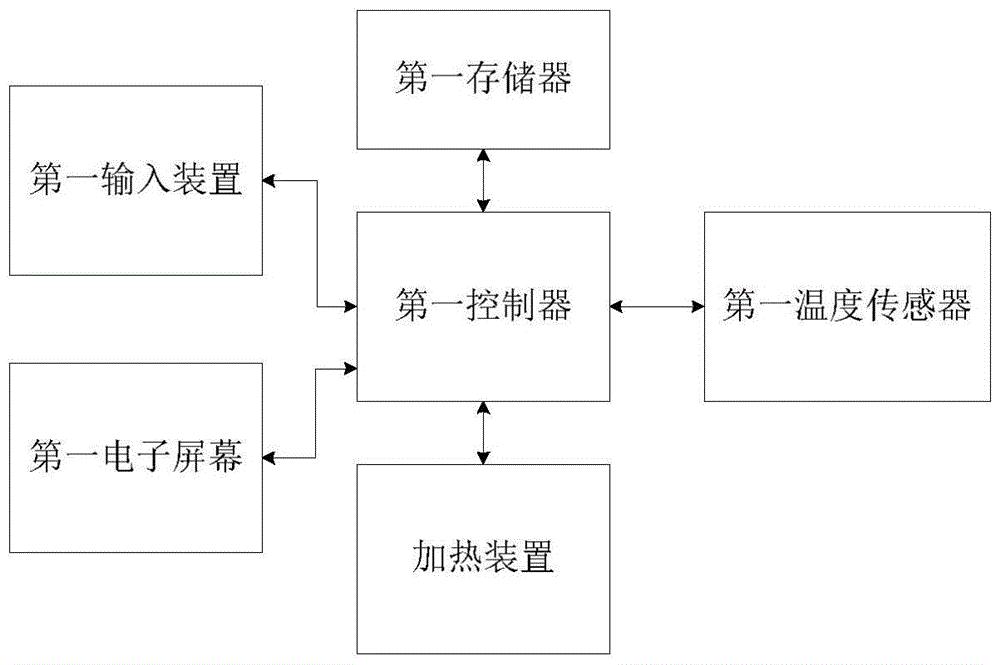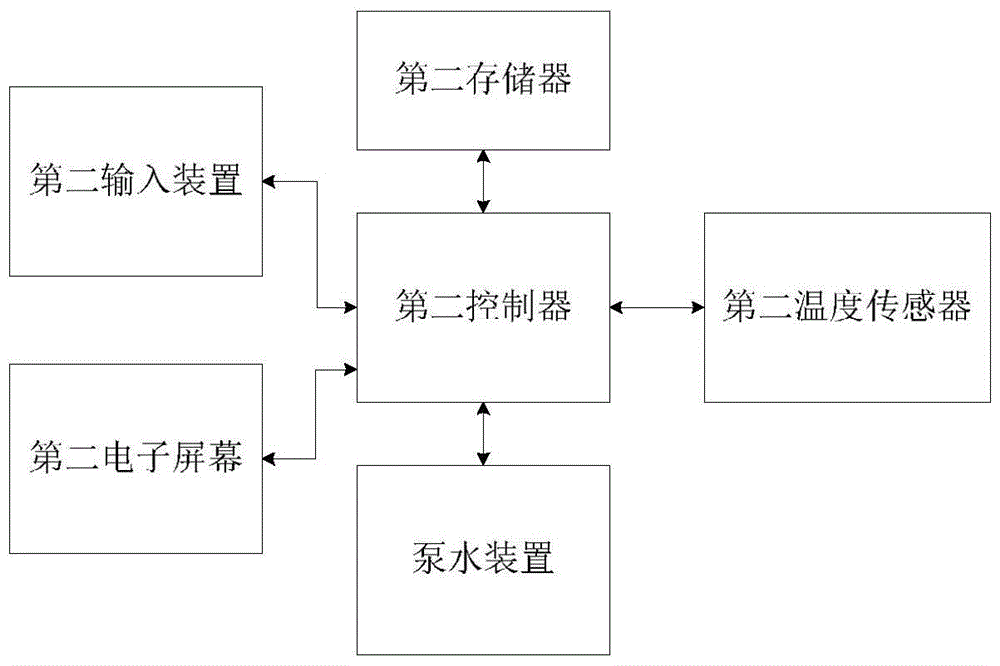A fully automatic low-energy-consumption heating method for greenhouses
A fully automatic, low energy consumption technology, applied in the field of greenhouse temperature increase, can solve the problems of energy loss, low initial temperature of the transmission medium, medium energy consumption, etc., to reduce the cost of construction and operation, flexible installation and adjustment, saving The effect of warming costs
- Summary
- Abstract
- Description
- Claims
- Application Information
AI Technical Summary
Problems solved by technology
Method used
Image
Examples
Embodiment 1
[0071] Embodiment 1: The full-automatic low-energy-consumption warming method for greenhouses provided in Embodiment 1 includes the following steps:
[0072] Installation steps: install the heating system, such as figure 1 As shown, the warming system is a fully automatic low-energy-consumption warming system for greenhouses, which includes a warmer, an electric temperature-controlled circulating water pump 2, a water pipe 3, and a heat sink 4. The warmer is an automatic warmer 1, and includes a stainless steel shell and a stainless steel inner shell. The stainless steel inner shell is a liquid volume cavity. The stainless steel shell and the stainless steel inner shell are filled with an insulation layer processed by foaming technology. The automatic warmer 1 is provided with a water outlet and a water inlet communicating with the liquid volume cavity; the water outlet of the automatic warmer 1, an electric temperature-controlled circulating water pump 2, a number of cooling fins...
Embodiment 2
[0088] Embodiment 2: The steps are basically the same as those in embodiment 1, and the similarities will not be repeated, the difference is:
[0089] In the installation step: the warming system is a fully automatic low-energy warming system for greenhouses, and its structure is basically the same as the warming system in Example 1, and the similarities are not repeated here. The difference is: The first temperature sensor includes a room temperature sensor (not shown in the figure) arranged outside the stainless steel housing of the automatic warmer 1 for collecting room temperature in the shed, and a room temperature sensor (not shown) arranged in the liquid volume cavity of the automatic warmer 1 A water temperature sensor (not shown in the figure) that collects the water temperature in the volume cavity; the second temperature sensor includes a room temperature sensor (not shown in the figure) that is arranged outside the electric temperature-controlled circulating water pump...
Embodiment 3
[0101] Embodiment 3: The steps are basically the same as those in embodiment 1, and the similarities will not be repeated, the difference is:
[0102] In the installation step: the warming system is a greenhouse full-automatic low-energy warming system, and its structure is basically the same as that of the warming system in Example 1. The similarities are not repeated here, the difference is: this implementation In Example 3, there are 12 aluminum alloy fins connected in sequence, and the volume of the liquid volume cavity is 150L. The first temperature sensor only includes a room temperature sensor arranged outside the stainless steel housing of the automatic warmer 1 and used to collect the room temperature in the shed; the second temperature sensor only includes a room temperature sensor arranged outside the electric temperature-controlled circulating water pump 2 A room temperature sensor for the room temperature in the collection shed. Of course, the first temperature sens...
PUM
 Login to View More
Login to View More Abstract
Description
Claims
Application Information
 Login to View More
Login to View More - R&D
- Intellectual Property
- Life Sciences
- Materials
- Tech Scout
- Unparalleled Data Quality
- Higher Quality Content
- 60% Fewer Hallucinations
Browse by: Latest US Patents, China's latest patents, Technical Efficacy Thesaurus, Application Domain, Technology Topic, Popular Technical Reports.
© 2025 PatSnap. All rights reserved.Legal|Privacy policy|Modern Slavery Act Transparency Statement|Sitemap|About US| Contact US: help@patsnap.com



